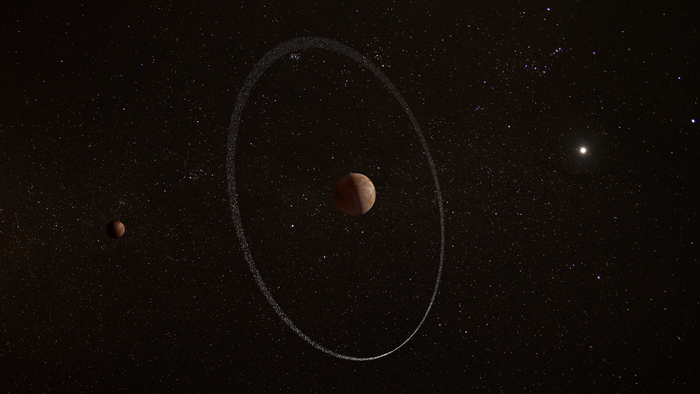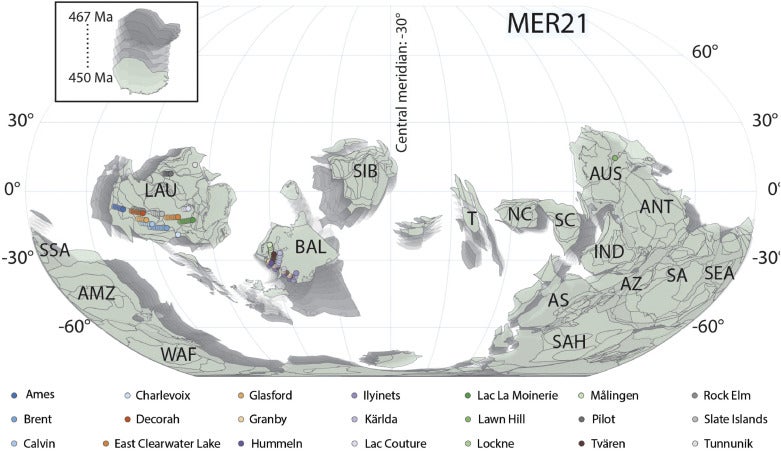Earth may once have had Saturn-like ring, scientists say
Ring may have cast shadow on planet and triggered extreme global cooling
Your support helps us to tell the story
As your White House correspondent, I ask the tough questions and seek the answers that matter.
Your support enables me to be in the room, pressing for transparency and accountability. Without your contributions, we wouldn't have the resources to challenge those in power.
Your donation makes it possible for us to keep doing this important work, keeping you informed every step of the way to the November election

Andrew Feinberg
White House Correspondent
Earth may briefly have had a ring system similar to Saturn’s over 450 million years ago during a period of unusually intense meteorite bombardment, a new study proposes.
Scientists assessed 21 asteroid craters from the “Ordovician impact spike” period 466 million years ago and noticed that these were strangely located in a narrow band of land close to the equator, despite over 70 per cent of the planet’s continental crust being outside this region at the time.
Normally, asteroids strike at random locations so impact craters are distributed evenly as seen on the moon and Mars.
Researchers suspect the impact pattern close to the equator was produced after a large asteroid had a close encounter with Earth millions of years ago.

In the new study, published in the journal Earth and Planetary Science Letters, they theorise that this giant asteroid broke apart due to tidal forces and formed a debris ring around our planet, similar to the rings seen around Saturn.
“Over millions of years, material from this ring gradually fell to Earth, creating the spike in meteorite impacts observed in the geological record,” study author Andy Tomkins from Australia’s Monash University explained.
“We also see that layers in sedimentary rocks from this period contain extraordinary amounts of meteorite debris.”
Scientists speculate that such a ring may have cast a shadow on the Earth with “potential climate implications”.
By blocking sunlight, they say the ring may have contributed to a significant global cooling event known as the “Hirnantian Icehouse”, recognised as one of the coldest periods in the last 500 million years.
This was a period of intense cooling 463–444 million years ago, puzzlingly at a time when the levels of carbon dioxide, a planet-heating greenhouse gas, were high in the atmosphere.
The theory sheds new light on how cosmic events could shape Earth’s climate.
In the new study, scientists calculated the surface area across continents capable of preserving craters from that time.
They found that regions in Western Australia, Africa and the North American Craton as well as small parts in Europe were well-suited for preserving such craters.
While only 30 per cent of the land area was close to the equator at the time, all impact craters were found in this region.

“The resulting fragments formed a debris ring that decayed over several tens of millions of years resulting in an anomalous spike in impact cratering rate,” they said.
“This hypothesis may explain why all impact structures from this time are located proximal to the equator.”
Researchers liken the chances of this happening to tossing a three-sided coin – if such a thing existed – and getting tails 21 times.
“We have estimated the probability that this impact structure distribution resulted from random unrelated impactors at 1 in 25 million,” scientists said.
Subscribe to Independent Premium to bookmark this article
Want to bookmark your favourite articles and stories to read or reference later? Start your Independent Premium subscription today.

Join our commenting forum
Join thought-provoking conversations, follow other Independent readers and see their replies
Comments